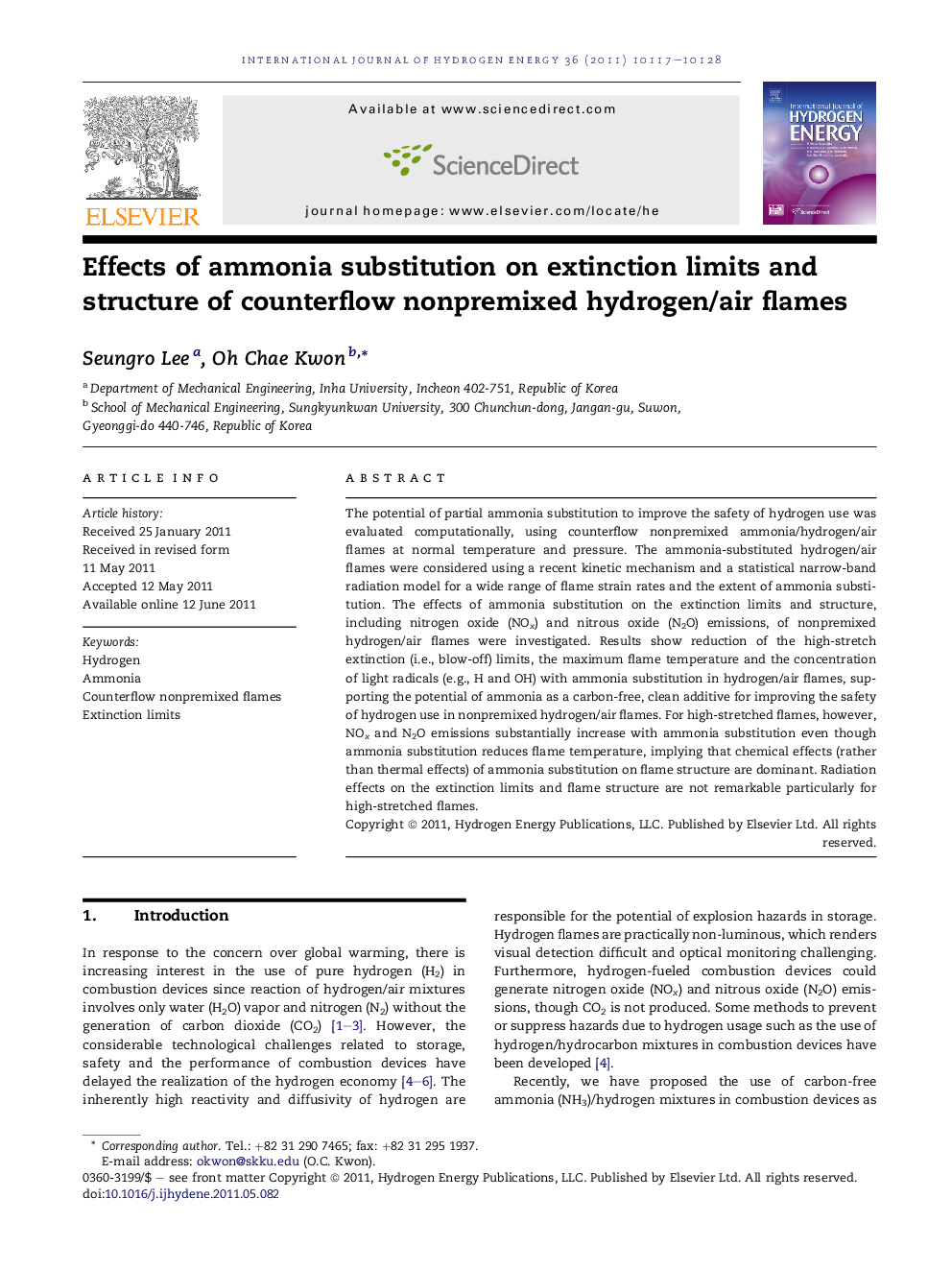| Article ID | Journal | Published Year | Pages | File Type |
|---|---|---|---|---|
| 1278954 | International Journal of Hydrogen Energy | 2011 | 12 Pages |
The potential of partial ammonia substitution to improve the safety of hydrogen use was evaluated computationally, using counterflow nonpremixed ammonia/hydrogen/air flames at normal temperature and pressure. The ammonia-substituted hydrogen/air flames were considered using a recent kinetic mechanism and a statistical narrow-band radiation model for a wide range of flame strain rates and the extent of ammonia substitution. The effects of ammonia substitution on the extinction limits and structure, including nitrogen oxide (NOx) and nitrous oxide (N2O) emissions, of nonpremixed hydrogen/air flames were investigated. Results show reduction of the high-stretch extinction (i.e., blow-off) limits, the maximum flame temperature and the concentration of light radicals (e.g., H and OH) with ammonia substitution in hydrogen/air flames, supporting the potential of ammonia as a carbon-free, clean additive for improving the safety of hydrogen use in nonpremixed hydrogen/air flames. For high-stretched flames, however, NOx and N2O emissions substantially increase with ammonia substitution even though ammonia substitution reduces flame temperature, implying that chemical effects (rather than thermal effects) of ammonia substitution on flame structure are dominant. Radiation effects on the extinction limits and flame structure are not remarkable particularly for high-stretched flames.
► We simulate counterflow nonpremixed NH3-substituted H2/air flames at NTP. ► The high-stretch extinction limits are reduced with NH3 substitution. ► Potential of NH3 as a C-free additive for improving the safety of H2 use is found. ► Chemical effects of NH3 substitution on flame structure are dominant. ► Radiation effects on the extinction limits and flame structure are not remarkable.
